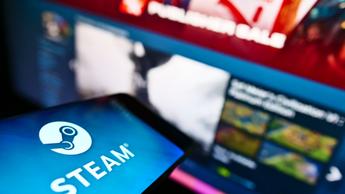Das Beta-Update von SteamOS verbessert die Kompatibilität für Nicht-Steam-Deck-Handhelds und bietet ein besseres Spielerlebnis als Windows 11
SteamOS vs. Windows 11: Warum Gamer die neue Beta-Version für Handheld-Gaming bevorzugen

Microsoft's Windows 11 has been controversial for PC gamers recently, specifically with its 24H2 update. And Valve's SteamOS looks set to be the most suitable alternative for handheld users, with its focus moving away from the Steam Deck for the first time.
As reported by GamingOnLinux, Valve released SteamOS 3.7.9 beta, which comes after its recent SteamOS 3.7 stable update. The update provided support for the Lenovo Legion Go S and other AMD-powered handhelds, and this new beta contains fixes for the devices; it addresses controller input and frame-pacing issues, and other tweaks you can read in its patch notes.
Valve recently stated that it would be continuously working on support for handheld devices that aren't officially SteamOS licensed, and it appears that it's kept true to its word. Users also have other SteamOS clones like Bazzite, which has been available and supported much longer than Valve's recent efforts for other handhelds.
It's an example of Valve supporting these portable systems within a short period of time, exactly one week after the SteamOS 3.7 stable release. Since Microsoft's Windows 11 is focused on desktop PCs and laptops, and less on handhelds, the difference between the two operating systems is evident.
Handheld vendors like Asus and Lenovo provide software like Armoury Crate to help streamline the experience with menus and hubs built for gaming. However, performance in games on SteamOS has been showcased as much better than games running on Windows 11 – and without bloatware and non-gaming software running in the background, it's not too much of a surprise.
Denken Sie an den Wechsel von Windows 11 zu SteamOS bei Handheld-Gaming-Geräten? Für viele Spieler ist der Umstieg auf SteamOS eine naheliegende Entscheidung, da es ein noch schlankeres und optimiertes Erlebnis für das Spielen unterwegs bietet. SteamOS ist speziell fürs Gaming entwickelt worden und sorgt für bessere Leistung, einfacheren Zugriff auf die Spielebibliothek und eine benutzerfreundliche Oberfläche, die auf Gaming-Enthusiasten zugeschnitten ist. Wenn Sie Ihr Handheld-Gaming-Erlebnis verbessern möchten, kann die Erkundung von SteamOS eine kluge Wahl sein, die den modernen Gaming-Anforderungen entspricht und die Bedienbarkeit insgesamt erleichtert.

Mit Funktionen wie Schlafmodus und Schnellfortsetzung auf SteamOS (oder Bazzite, das ich verwende) und vor allem besserer Leistung war der Wechsel von Windows 11 für mich eine einfache Entscheidung. Ich erwarte, dass kommende Geräte wie das Asus ROG Ally X, MSI Claw 8 AI+ und Lenovo Legion Go diese Veränderung ebenfalls früher übernehmen werden. Die Nutzung des Schlafmodus unter Windows 11 über den Power-Button kann problematisch sein, da der Bildschirm oft unerwartet wieder angeht oder Spiele beim Fortsetzen abstürzen oder einfrieren. Zusammen mit häufigen Mikro-Stottern in Spielen, Problemen mit Grafiktreiberunterstützung seitens der Hersteller, der ineffizienten Frame-Generation-Software von AMD sowie vorinstallierter Bloatware würde eine Rückkehr zu Windows wie ein Rückschritt erscheinen. Es ist ermutigend zu sehen, dass Spieleentwickler daran arbeiten, Linux-basierte Betriebssysteme zu unterstützen, wobei Titel wie Splitgate 2 durch aktuelle Updates Fortschritte zeigen. Hoffentlich wächst dieser Trend weiter, um Gamern zuverlässigere und flexiblere Optionen zu bieten.
